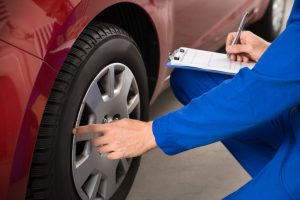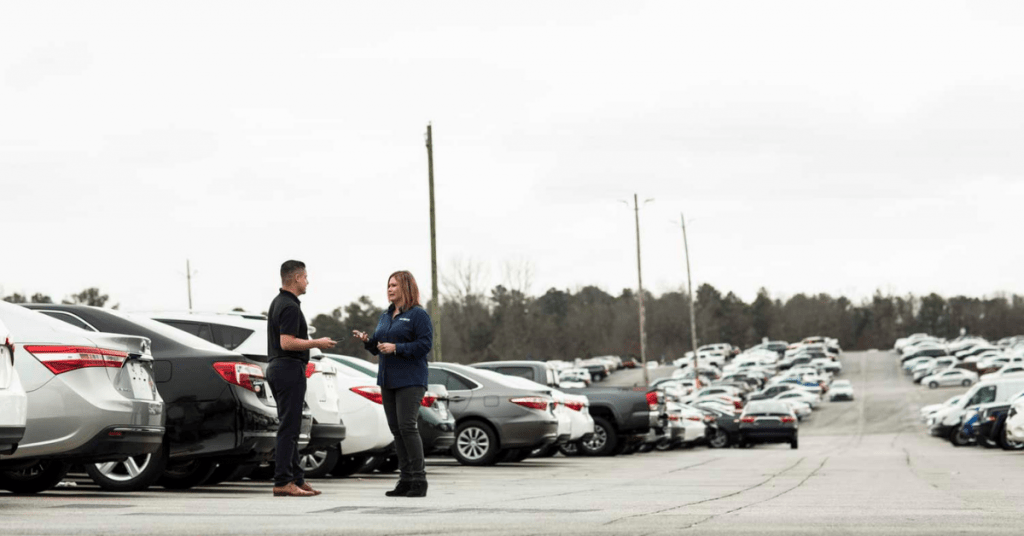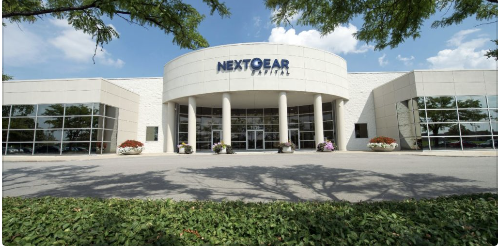 Dealer floor planning is one of the easiest ways for auto dealers to improve their business cash flow. Once approved for a floor plan, there are a number of ways dealers can see the immediate impact that a floor plan can make for their dealership.
Dealer floor planning is one of the easiest ways for auto dealers to improve their business cash flow. Once approved for a floor plan, there are a number of ways dealers can see the immediate impact that a floor plan can make for their dealership.
Dealer floor planning allows you to choose how you want to grow your dealership
Floor plan financing opens up a number of options for a dealer to choose how they want to grow their business. Since a floor plan allows dealers to purchase extra inventory on a floor plan instead of using cash, this can lead to extra flexibility in a dealer’s budget. The cash a dealer has on hand can be used to pay for other expenses such as more staff, employee payroll, marketing or lot improvements.
Since dealers don’t have to worry quite as much about having enough cash on hand to purchase inventory, they are free to spend more time and money on their business growth goals.
Dealer floor planning gives dealers time back from administrative tasks
In a typical auction purchase, dealers will need to cut a check and persistently follow up with the auction to ensure individual checks have cleared and that the correct titles are received. This can take up a lot of a dealer’s time. With a floor plan, transactions and title transfers are taken care of seamlessly between the auction and floor planning company.
Dealer floor planning helps dealers to establish dealership discipline and routine
When a dealer uses cash or a business loan from a bank to purchase inventory, there isn’t always an incentive for dealers to sell vehicles or profit quickly on a sale. If dealers don’t sell inventory in a timely manner, their lots can quickly become overstocked and aged inventory becomes a looming problem. Dealers that use a floor plan have a number of contractually determined days until they have to pay their floor plan company back the original loan amount plus any accrued interest and fees. If a dealer hasn’t received a profitable bid on a vehicle due for payoff, that deadline can start a dealership’s inventory exit strategy.
Each inventory exit strategy will vary from dealer to dealer. Whether that plan includes wholesaling aged inventory or waiting for a better offer from a consumer, the floor plan deadline ensures that a dealer doesn’t let their investment depreciate.
What could your dealership do with more cash on hand? Could you hire more staff? Open another location? Purchase more inventory? Want to learn more about what dealer floor planning can do for your dealership? Find your local representative and we’ll get you connected.






 Dealers who purchase vehicles at auction will often send those cars through a reconditioning process. It typically takes an average dealer seven to 10 days to make sure a car is ready to sell. How much of that time includes the reconditioning process? Depending on the state of the acquired vehicle, the amount of time reconditioning takes can vary. However, there are always steps dealers can take to improve the amount of time it takes for a vehicle to go through the reconditioning process.
Dealers who purchase vehicles at auction will often send those cars through a reconditioning process. It typically takes an average dealer seven to 10 days to make sure a car is ready to sell. How much of that time includes the reconditioning process? Depending on the state of the acquired vehicle, the amount of time reconditioning takes can vary. However, there are always steps dealers can take to improve the amount of time it takes for a vehicle to go through the reconditioning process.
 Today’s car buyers spend a lot of time looking for a vehicle online. According to Cox Automotive’s 2017 Car Buyer Journey, car buyers spend 60 percent of their time online researching vehicles and dealerships. In addition, 98 percent of consumers want the ability to complete at least some of the car buying process online.
Today’s car buyers spend a lot of time looking for a vehicle online. According to Cox Automotive’s 2017 Car Buyer Journey, car buyers spend 60 percent of their time online researching vehicles and dealerships. In addition, 98 percent of consumers want the ability to complete at least some of the car buying process online.
 It’s easy for a car dealer to stock up their lots if they have enough money on hand to buy inventory. One of the most common ways for a dealer to have enough money on hand to purchase inventory is to use an auto floor plan.
It’s easy for a car dealer to stock up their lots if they have enough money on hand to buy inventory. One of the most common ways for a dealer to have enough money on hand to purchase inventory is to use an auto floor plan.
 After a purchase, it can take a significant amount of time for a vehicle to become customer-ready. The increased speed of getting a vehicle to market is important. There is a clear correlation between how quickly inventory is merchandised and online to how fast that inventory moves. Dealers have a better chance of improving overall profits the faster that inventory moves. So what can a dealer do to get inventory to their lots faster and turn inventory quickly?
After a purchase, it can take a significant amount of time for a vehicle to become customer-ready. The increased speed of getting a vehicle to market is important. There is a clear correlation between how quickly inventory is merchandised and online to how fast that inventory moves. Dealers have a better chance of improving overall profits the faster that inventory moves. So what can a dealer do to get inventory to their lots faster and turn inventory quickly?
 The sale has been made. Your customer is pleased with their vehicle purchase. But does your dealership’s relationship with the customer end after the purchase? In an ideal world, that one customer would hopefully refer their friends to purchase vehicles at your dealership, would come back to get their vehicle serviced for maintenance and would purchase their next car at your dealership. However, according to a study from Autotrader, only 46 percent of new car buyers return to a dealership where they have had prior experience, and only 30 percent of used car buyers return to a dealership where they have had prior experience. That means approximately 70 percent of customers that purchase from your dealership don’t return.
The sale has been made. Your customer is pleased with their vehicle purchase. But does your dealership’s relationship with the customer end after the purchase? In an ideal world, that one customer would hopefully refer their friends to purchase vehicles at your dealership, would come back to get their vehicle serviced for maintenance and would purchase their next car at your dealership. However, according to a study from Autotrader, only 46 percent of new car buyers return to a dealership where they have had prior experience, and only 30 percent of used car buyers return to a dealership where they have had prior experience. That means approximately 70 percent of customers that purchase from your dealership don’t return. 




 You’ve got a customer on the lot and you spend part of your evening showing them different vehicles. They seem interested, but then they leave. Why is your dealership missing out on these car dealership sales?
You’ve got a customer on the lot and you spend part of your evening showing them different vehicles. They seem interested, but then they leave. Why is your dealership missing out on these car dealership sales?
 Automotive industry conferences are an excellent way to stay up-to-date on the latest auto industry news. In addition, they are a great way to get introduced to dealer partners and network with other dealers that might share similar experiences. Independent dealers in Georgia recently had the opportunity to attend the Georgia Independent Automobile Dealers Association’s annual conference.
Automotive industry conferences are an excellent way to stay up-to-date on the latest auto industry news. In addition, they are a great way to get introduced to dealer partners and network with other dealers that might share similar experiences. Independent dealers in Georgia recently had the opportunity to attend the Georgia Independent Automobile Dealers Association’s annual conference.
 The concept of a dealer floor plan is pretty simple: a floor planning lender gives a dealer a line of credit to purchase inventory. However, in the context of daily dealer activities, how does a dealer floor plan work? From winning a bid at a local auction to moving inventory to your lot, there are many unique advantages that a dealer floor plan has to offer, including ease of use and expediting the buying process. Below we have listed the general process for floor planning at an auto auction.
The concept of a dealer floor plan is pretty simple: a floor planning lender gives a dealer a line of credit to purchase inventory. However, in the context of daily dealer activities, how does a dealer floor plan work? From winning a bid at a local auction to moving inventory to your lot, there are many unique advantages that a dealer floor plan has to offer, including ease of use and expediting the buying process. Below we have listed the general process for floor planning at an auto auction.